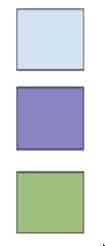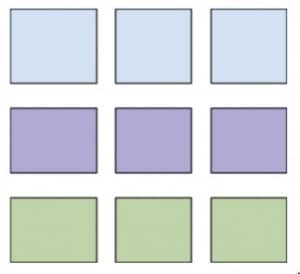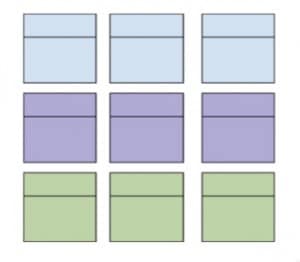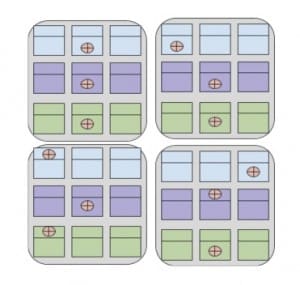Learner-Centered Tip of the Week: Measurement Topics, Not Targets
CompetencyWorks Blog
This post originally appeared on Courtney Belolan’s website on April 12, 2016. Belolan is the instructional coach for RSU2 in Maine. This tip of the week is designed for those schools that are using the measurement topic/learning target model to organize continuum of learning. There are other models being used by schools for which this will not directly apply, although the insights in how we might begin to think about personalizing instruction will be valuable to everyone.
Being a teacher in a learner-centered proficiency based system can mean some big changes. One of the biggest changes in thinking to work through involves taking a step back from working with targets at a particular level, to working with a range of targets within the measurement topic. Remember, a Measurement Topic is a series of related targets arranged in a progression from simple to complex. Measurement Topics do not necessarily have one target, or level, per grade. Nor do Measurement Topics necessarily always make sense to begin when students enter the school system in preK or Kindergarten.
Think about this visual:

The boxes represent three targets, from three different Measurement Topics. In many places, right now this is how teachers approach their work with learning targets. Only the targets typically associated with a traditional grade level are on the proverbial teaching table. If students happen to be on a different target, they are in a different group or maybe even a different class. Planning of lessons and units revolve around this small set of targets. It is possible that the three Measurement Topics are combined in some way.
Now think about this visual:
 These boxes represent three Measurement Topics, with a range of learning targets from the progression. This is how we need to start working with Learning Targets. Learning Targets are not tied to a traditional grade level, so as teachers we need to be prepared for students to be working within a range in the Measurement Topics for our classes. Further, this needs to be true at any given point in a learning experience. So, if a student happens to be ready for the middle blue box they can begin there, then move on to the next blue box instead of being “done” with the blue MT.
These boxes represent three Measurement Topics, with a range of learning targets from the progression. This is how we need to start working with Learning Targets. Learning Targets are not tied to a traditional grade level, so as teachers we need to be prepared for students to be working within a range in the Measurement Topics for our classes. Further, this needs to be true at any given point in a learning experience. So, if a student happens to be ready for the middle blue box they can begin there, then move on to the next blue box instead of being “done” with the blue MT.
Now think about this visual:
 These boxes represent three MTs with targets that have defined level 3(meeting) and level 4(exceeding) expectations. When we work with targets in this way, not only can students move along the progression at their readiness level, they can also move to deeper reasoning levels within each target.
These boxes represent three MTs with targets that have defined level 3(meeting) and level 4(exceeding) expectations. When we work with targets in this way, not only can students move along the progression at their readiness level, they can also move to deeper reasoning levels within each target.
When we take a step back and think about our curriculum from the broader view of Measurement Topics, progressions of learning, that are not fixed to a teacher or traditional grade level the possibilities for creating learning opportunities that engage a variety of learners certainly opens up. Let’s keep thinking abstractly, and picture some of the possibilities for where learners in a particular unit could be with the blue, purple, and green MTs we’ve been using:
 Each gray box represent a learner, and the light red marks on the MTs represent the current target at which the learner is working. Now this shows only four possible learner profiles, there are many more possibilities.
Each gray box represent a learner, and the light red marks on the MTs represent the current target at which the learner is working. Now this shows only four possible learner profiles, there are many more possibilities.
When we think with a broader view, we can make learning opportunities much more engaging for our learners. We can have personalized learning that still honors the need for social interaction, and keeps a group together in the sense that they are exploring a common theme or question. We can have personalized learning that still holds student accountable to clear standards while honoring their readiness.
Look back at the post about applied learning opportunities being a mosaic. How do the visuals here support the mosaic visual?
See also:
- Learner-Centered Tip of the Week: Connecting Learning Targets
- Learner-Centered Tip of the Week: Increasing Engagement
- Learner-Centered Tip of the Week: Reining in the Checklist Mindset
Courtney Belolan works at RSU 2 in Maine where she supports K-12 teachers with performance-based, individualized learning. Courtney works closely with teams and teachers as a coach, and with the school and district leadership teams as an instructional strategist. Courtney has worked as a 6-12 literacy and instructional coach, a middle level ELA teacher, an environmental educator, and a digital literacy coach. Her core beliefs include the idea that the best education is one centered on student passions and rooted in interdisciplinary applications, and that enjoying learning is just as important as the learning itself.